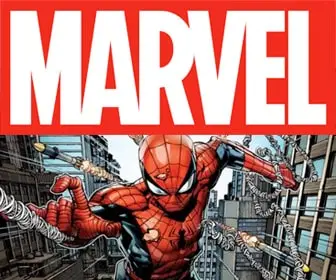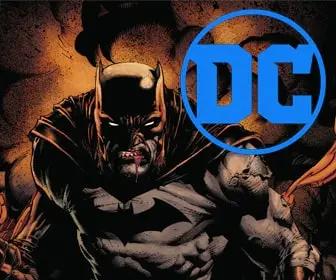
Choosing the Best Format for your Property

Self-publishing has become a big part of the comic book world. Many creators want to share their stories without going through big publishers. But, how do you decide which format is best for your comic book? Should you go with a monthly comic book or a full-sized graphic novel?
Monthly comic books come out regularly, like once a month. They are shorter and keep readers waiting for the next issue. Full-sized graphic novels are longer and tell the whole story in one book. Each format has its own pros and cons.
In this article, we will help you understand the differences between monthly comic books and graphic novels. We will look at what you need to think about before making your choice. By the end, you will know which format fits your story, budget, and audience best. Let’s get started!
Understanding the Formats
Monthly Comic Books
Monthly comic books are serialized publications that release on a regular schedule, usually once a month. Each issue is shorter, often around 20-30 pages, and part of a larger ongoing story. This format allows for continuous storytelling, with cliffhangers and plot twists that keep readers coming back for the next installment.
Advantages:
- Frequent Engagement: Regular releases keep readers engaged and excited about the story.
- Flexibility: Creators can adjust the story based on reader feedback and market trends.
- Lower Upfront Costs: Producing shorter issues spreads out the production costs over time.
Disadvantages:
- Pressure of Deadlines: Meeting monthly deadlines can be stressful and may affect quality.
- Potential Drop-Off: Readers might lose interest if the story progresses too slowly or if there are delays between issues.
- Marketing Challenges: Each issue requires its own marketing push to maintain interest and sales.
Full-Sized Graphic Novels
Full-sized graphic novels present the entire story in one complete volume. These books are usually much longer than monthly comics, often ranging from 100 to 300 pages. This format is ideal for stories that have a clear beginning, middle, and end.
Advantages:
- Complete Story: Readers get the entire narrative in one book, which can be more satisfying.
- Deeper Storytelling: The extended length allows for more detailed plot development and character arcs.
- Single Marketing Effort: One release means a single, focused marketing campaign.
Disadvantages:
- Higher Upfront Costs: Producing a full-length graphic novel requires a larger initial investment in time and money.
- Longer Production Time: Creating a complete graphic novel can take much longer than producing individual comic issues.
- One-Time Release Risk: If the graphic novel doesn’t catch on, there’s no opportunity to build readership over time.
Understanding these two formats is crucial for any creator looking to self-publish their comic book. Each has unique benefits and challenges that can significantly impact your project’s success. In the next section, we will discuss the factors you need to consider when choosing between a monthly comic book and a full-sized graphic novel.
Factors to Consider
Storytelling Style
The storytelling style of your comic can influence your choice between a monthly comic book and a graphic novel. Monthly comic books are great for continuous narratives with cliffhangers and plot twists that keep readers hooked. If your story thrives on suspense and gradual development, this format might suit you best.
On the other hand, graphic novels work well for contained narratives. They allow for a complete story arc within one volume. If your story has a clear beginning, middle, and end, a graphic novel can provide a more satisfying reading experience.
Budget and Resources
Your budget and resources play a crucial role in deciding between these formats. Monthly comic books often have lower upfront costs since you produce shorter issues over time. This can help manage your budget more effectively. However, you will need to sustain this production pace, which requires consistent time and effort.
Graphic novels require a higher initial investment because you are producing the entire story at once. This means spending more money and time upfront. However, once completed, you have a finished product ready for sale, which can simplify your marketing and sales efforts.
Audience and Market
Understanding your audience and the market is essential. Monthly comic books appeal to readers who enjoy serialized content and the anticipation of the next issue. If your target audience prefers regular updates and ongoing stories, this format could be more successful.
Graphic novels attract readers who favor complete stories they can enjoy in one sitting. This format is also popular in bookstores and libraries, potentially reaching a broader audience. Consider current market trends and reader preferences when making your decision.
By considering these factors—storytelling style, budget and resources, and audience and market—you can make an informed choice about which format will best serve your self-published comic book. Each format has its own strengths and challenges, so think carefully about what aligns best with your project’s goals and your personal circumstances.
Pros and Cons of Each Format
Monthly Comic Books
Pros:
- Regular Engagement: Monthly issues keep readers engaged and excited. They look forward to the next installment, which helps build a loyal fan base.
- Flexibility: Creators can adapt the story based on reader feedback and market trends. This allows for adjustments and improvements along the way.
- Spread-Out Costs: Producing shorter issues over time spreads out the production costs, making it easier to manage your budget.
Cons:
- Deadline Pressure: Meeting monthly deadlines can be stressful and may affect the quality of the work. Consistent production demands a lot of time and effort.
- Risk of Losing Interest: If the story progresses too slowly or there are delays between issues, readers might lose interest. Keeping them hooked is a continuous challenge.
- Frequent Marketing Needed: Each issue requires its own marketing push to maintain interest and sales. This can be time-consuming and expensive.
Full-Sized Graphic Novels
Pros:
- Complete Story: Readers get the entire narrative in one book, which can be more satisfying. They don’t have to wait for the next issue to see how the story ends.
- Deeper Storytelling: The extended length allows for more detailed plot development and character arcs. This can lead to a richer and more immersive reading experience.
- Single Marketing Effort: A one-time release means a single, focused marketing campaign. This can be more efficient and cost-effective.
Cons:
- High Upfront Costs: Producing a full-length graphic novel requires a larger initial investment in both time and money. This can be a significant barrier for some creators.
- Long Production Time: Creating a complete graphic novel takes much longer than producing individual comic issues. This means a longer wait before you can start selling your work.
- One-Time Release Risk: If the graphic novel doesn’t catch on, there’s no opportunity to build readership over time. Success relies on making a strong impact with a single release.
Understanding the pros and cons of each format is essential for making an informed decision. Monthly comic books and graphic novels each offer unique advantages and face different challenges. Consider these points carefully to determine which format aligns best with your goals, resources, and audience.
Case Studies
Example 1: A Successful Monthly Comic Series
Title: “Saga”
Creator: Brian K. Vaughan and Fiona Staples
“Saga” is a popular monthly comic series that has gained a huge following. The story combines science fiction and fantasy, following two soldiers from opposite sides of a galactic war who fall in love and start a family.
Success Factors:
- Engaging Storytelling: Each issue ends with a cliffhanger, keeping readers eager for the next installment.
- Strong Characters: The characters are well-developed and relatable, which helps build a loyal fan base.
- Consistent Quality: The creators maintain high standards for both the writing and artwork, which keeps readers satisfied.
Lessons Learned:
- Regular engagement with readers is crucial for a monthly series.
- Cliffhangers and strong characters can help retain reader interest.
- Maintaining quality is essential for building a loyal fan base.
Example 2: A Successful Full-Sized Graphic Novel
Title: “Maus”
Creator: Art Spiegelman
“Maus” is a groundbreaking graphic novel that tells the story of a Holocaust survivor and his son. The novel uses anthropomorphic characters to depict different nationalities, with Jews as mice and Nazis as cats.
Success Factors:
- Complete Narrative: The graphic novel format allows for a complete and powerful story in one volume.
- Deep Themes: The extended length provides space to explore complex themes like trauma, memory, and survival.
- Critical Acclaim: “Maus” received widespread acclaim and won prestigious awards, boosting its popularity and sales.
Lessons Learned:
- A complete narrative in one volume can offer a more satisfying reading experience.
- Graphic novels provide the space to explore deep and complex themes.
- Critical acclaim and awards can significantly boost a graphic novel’s success.
These case studies highlight the strengths of both formats. “Saga” shows the power of regular engagement and strong characters in a monthly comic series. “Maus” demonstrates how a full-sized graphic novel can deliver a complete and impactful story. By examining these examples, you can gain insights into what might work best for your own self-published comic book.
Making the Decision
Assessing Your Story
First, think about your story. Is it better suited for a continuous narrative or a contained one? If your story has lots of cliffhangers and plot twists, a monthly comic book might be the best fit. If your story has a clear beginning, middle, and end, a graphic novel could provide a more satisfying experience for your readers.
Evaluating Your Resources
Next, consider your budget and resources. Do you have the time and money to produce regular monthly issues? If you do, the spread-out costs and regular engagement of monthly comics can be beneficial. However, if you prefer to make a larger upfront investment and have a longer production time, a graphic novel might be the way to go. This option can lead to a single, focused marketing push once the book is complete.
Understanding Your Audience
Think about your target audience. Do they enjoy serialized content and waiting for the next issue? Or do they prefer to read a complete story in one sitting? Research current market trends and reader preferences. Monthly comics can build a loyal fan base with regular releases, while graphic novels can attract readers who appreciate a complete narrative in one volume.
Final Decision-Making Tips
To sum up, assess your story to determine if it fits better with a serialized or contained format. Evaluate your budget and resources to see which option you can sustain. Understand your audience and their preferences to ensure you choose the format that will engage them the most.
Making the right choice between a monthly comic book and a graphic novel can significantly impact the success of your self-published property. Consider all these factors carefully and make an informed decision that aligns with your goals, resources, and audience.
Denouement
Choosing between a monthly comic book and a full-sized graphic novel is a crucial decision for any self-published creator. Each format has unique advantages and challenges that can impact your project’s success.
Monthly comic books offer regular engagement with readers and flexibility in storytelling, but they require consistent production and marketing efforts. Graphic novels provide a complete and immersive story in one volume, allowing for deeper narrative development, but they demand a higher upfront investment and longer production time.
By carefully assessing your story, evaluating your budget and resources, and understanding your audience, you can make an informed choice that aligns with your goals. Whether you choose the excitement of monthly releases or the depth of a graphic novel, remember that both formats have the potential to showcase your creative vision and connect with readers.
Take the time to weigh your options and select the format that best fits your project. With the right approach, you can achieve success in the world of self-publishing and bring your unique stories to life.










